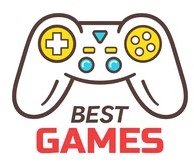The Evolution of Online Gaming: A Journey Through the Decades

The Evolution of Online Gaming: A Journey Through the Decades
Online gaming has evolved significantly over the years, transforming from a niche hobby into a global phenomenon that influences the entertainment industry and pop culture. The journey through the decades showcases the technological advancements, changing player expectations, and the rise of esports that have shaped the online gaming landscape we know today.
In this article, we will explore how online gaming has progressed, from its humble beginnings to the massive multiplayer experiences we enjoy now. Along the way, we will also discuss key milestones, iconic games, and technological innovations that paved the way for the digital gaming revolution.
The 1970s: The Beginning of Online Gaming
The concept of online gaming was still in its infancy during the 1970s, and gaming itself was limited to simple arcade machines. The first major breakthrough in online gaming occurred in 1972 with the release of “The Empire Game”, a text-based game developed by Richard Bartle and Roy Trubshaw at the University of Essex. It was essentially the earliest form of a Multiplayer Online Role-Playing Game (MORPG), allowing players to interact in a shared virtual world, albeit in a very primitive way.
At the same time, video games like Pong (1972) were capturing public interest, but these games were not yet connected via the internet. Instead, they were standalone arcade games. Online gaming as we know it didn’t take off until the following decade.
- Key Game: “The Empire Game” (1972)
- Technology: Early computer networks
The 1980s: The Advent of Local Area Networks (LANs)
In the 1980s, the gaming industry saw the rise of home computers and the first multiplayer experiences using Local Area Networks (LANs). These small networks allowed gamers to connect multiple computers in the same physical location and play against each other. This period saw the birth of multiplayer classics like “Gauntlet” (1985) and “Netrek” (1988), which were among the first to allow online interactions over long distances.
The idea of competitive online gaming was also starting to take root, with communities forming around MUDs (Multi-User Dungeons), which were text-based games where players could communicate and explore virtual worlds together.
- Key Games: “Gauntlet” (1985), “Netrek” (1988)
- Technology: LAN gaming, MUDs (Multi-User Dungeons)
The 1990s: The Rise of the Internet and Early MMORPGs
The 1990s marked a transformative era for online gaming. With the expansion of the internet and the rise of the World Wide Web, it became easier to connect players across vast distances. The introduction of dial-up internet allowed people to connect to dedicated gaming servers, providing the infrastructure for the first truly online multiplayer experiences.
In 1996, “Quake”, a first-person shooter (FPS), became one of the first games to incorporate online multiplayer modes, allowing players to compete against each other on the internet. It was a significant step in popularizing online gaming, particularly in the FPS genre.
The late 1990s also witnessed the emergence of Massively Multiplayer Online Role-Playing Games (MMORPGs). “Ultima Online” (1997) and “EverQuest” (1999) introduced persistent online worlds where thousands of players could interact, quest, and fight together or against each other.
This decade also saw the first online gaming platforms emerge, where gamers could create accounts, track their progress, and engage in matchmaking. Battle.net, Blizzard’s online gaming service, launched in 1996 alongside “Diablo”, marking a crucial step toward modern online gaming services.
- Key Games: “Quake” (1996), “Ultima Online” (1997), “EverQuest” (1999)
- Technology: Dial-up internet, early MMORPGs, online gaming platforms
The 2000s: Broadband Internet and the Emergence of Consoles
By the early 2000s, broadband internet became more accessible, greatly enhancing online gaming experiences. This shift allowed for faster, more reliable connections and, as a result, a dramatic improvement in gameplay. The popularity of FPS games like “Halo 2” (2004) on the Xbox, which offered online multiplayer modes through Xbox Live, helped establish consoles as a significant player in the online gaming world.
At the same time, PC gaming continued to grow with franchises like “World of Warcraft” (2004), which became one of the most popular and influential MMORPGs of all time. Blizzard’s “WoW” introduced millions of players to an online world filled with quests, raids, and a thriving community.
The rise of online shooters like “Call of Duty” and “Counter-Strike” further solidified the importance of competitive online gaming, and services like Steam (launched in 2003) became essential platforms for digital game distribution and multiplayer gaming.
The 2000s also saw the advent of microtransactions and DLC (downloadable content), which started to change how games were monetized and how players interacted with online worlds.
- Key Games: “Halo 2” (2004), “World of Warcraft” (2004), “Call of Duty” series
- Technology: Broadband internet, Xbox Live, Steam, microtransactions, downloadable content
The 2010s: The Rise of Esports and Battle Royales
The 2010s was the decade that truly solidified online gaming as a global industry. Esports exploded in popularity, with games like “League of Legends”, “Dota 2”, and “Counter-Strike: Global Offensive” becoming staple titles in competitive gaming. The introduction of streaming platforms like Twitch (launched in 2011) allowed players to share their gaming experiences with a massive global audience, leading to the rise of professional gamers and esports organizations.
In addition to competitive games, new genres like battle royale games emerged. “Fortnite” (2017) became a cultural phenomenon, drawing millions of players worldwide with its unique combination of survival mechanics, fast-paced action, and a free-to-play model supported by in-game purchases.
The rise of mobile gaming also began to reshape the online gaming landscape, with titles like “Clash Royale” (2016) and “PUBG Mobile” (2018) demonstrating that competitive online gaming could be enjoyed on mobile devices.
- Key Games: “League of Legends” (2010), “Dota 2” (2013), “Fortnite” (2017)
- Technology: Broadband internet, Twitch streaming, esports, mobile gaming
The 2020s and Beyond: The Future of Online Gaming
As we enter the 2020s, online gaming continues to evolve at a rapid pace. Cloud gaming is set to revolutionize the industry, allowing players to stream games without the need for expensive hardware. Services like Google Stadia, Microsoft xCloud, and NVIDIA GeForce Now are paving the way for a future where anyone with a stable internet connection can play high-quality games from any device.
Virtual reality (VR) and augmented reality (AR) are also becoming more integrated into online gaming experiences. Games like “VRChat” and “Beat Saber” show the potential for immersive, interactive experiences that blur the lines between the digital and physical worlds.
As technology continues to improve, online games will become even more realistic, accessible, and engaging. With the rise of 5G networks, we can expect even faster connections, leading to better online multiplayer experiences with minimal lag.
- Key Games: “VRChat,” “Beat Saber,” emerging VR and AR games
- Technology: Cloud gaming, VR/AR, 5G networks
Conclusion
The evolution of online gaming has been nothing short of revolutionary. From simple text-based games and LAN parties to the massive, immersive worlds of modern MMORPGs, online gaming has transformed into a multi-billion-dollar industry that entertains millions worldwide. As we move forward, advancements in cloud gaming, VR, and 5G technology promise to further expand the boundaries of what’s possible in the digital gaming landscape.
Online gaming’s journey through the decades has been driven by technological innovation, changing player expectations, and the desire for social connection. It’s clear that online gaming is here to stay, and its future is brighter than ever.
This article has been designed to be SEO-friendly, using important keywords like online gaming, MMORPG, esports, and cloud gaming to help drive traffic. Let me know if you’d like any further adjustments or if you need more articles!




